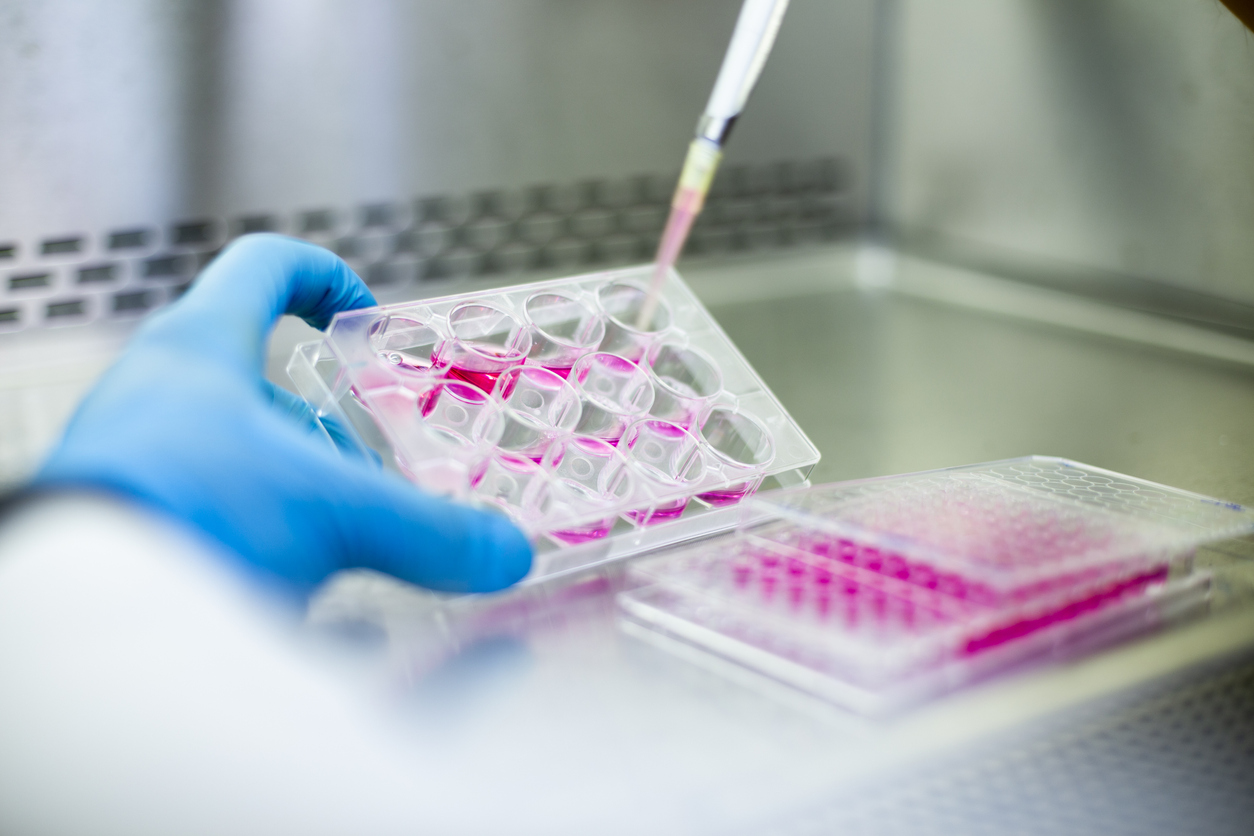Dead Cell Removal
Updated on Apr 2, 2025 Share
What Is Dead Cell Removal?
Dead cell removal involves removing dead cells and debris from a culture or cell population to enhance purity and viability. Researchers and clinicians utilize this process in various research and clinical applications, including cell culturing, sorting, manufacturing, and cellular assays like flow cytometry.
How Is Dead Cell Removal Used Across Applications?
Cell culture experiments involve studying cells in a natural and controlled state. Over time, dead cells can accumulate within a cell culture, negatively affecting the viability and function of the remaining living cells. Maintaining the live population of cells is imperative for obtaining accurate experimental results in flow cytometry and immunophenotyping. Removing dead cells before flow cytometry or sequencing increases the specificity and accuracy of results.
Cell sorting processes like Fluorescence-Activated Cell Sorting (FACS) rely on high-quality starting materials to obtain the purest final isolated population. Many sorting protocols include a step to remove dead cells to reduce confounding cellular material during the sorting stage. Dead cells left in a sample can leech nucleic acids and spur inflammation, which is detrimental to the remaining cells and contaminates downstream processes that recognize DNA and RNA fragments, such as polymerase chain reaction (PCR), next-generation sequencing, and single-cell genomics.
Contamination from dead cells and their by-products also harms cell engineering and cell therapy. Maintaining a high-quality population of cells is critical for therapeutic success, and the presence of leftover dead cells leads to contamination and a decrease in quality.
Benefits of Dead Cell Removal Before Further Processing
Removing dead cells from a cell population or culture enhances the performance and clarity of downstream assays and analyses. Eliminating dead cellular matter reduces the disastrous effects caused by contamination. Dead cells compete with living cells by occupying space and excreting particles that disrupt nutrient flow within the living cell population. These contaminating particles consist of loose nucleic acids, proteins, and enzymes that can interact with living cells and interfere with downstream assays, especially genomic analyses.
Dead cell contamination can also disrupt the culture environment, triggering inflammation and activation of nearby cells and putting the remaining living cells at risk. Removing dead cell contamination is an essential part of cell sample processing that immediately enhances a cell population’s purity, increasing the accuracy and specificity of further testing or clinical administration.
Immediate Benefits of Dead Cell Removal Using Microbubbles
Access a high-quality cell population free of dead cell contaminants in minutes using Akadeum’s microbubble technology. Specially designed in our Dead Cell Removal Microbubble Kit, Akadeum’s Buoyancy-Activated Cell Sorting (BACS™) microbubbles target dead cells and gently remove them from the cell solution through natural buoyancy and antibodies. Our kit provides efficient and affordable dead cell removal capabilities for large-scale throughput.
Microbubbles for dead cell removal offer a platform capable of handling large volumes of samples simultaneously, meeting the critical demand for cells in numerous therapeutic applications. Patients may require simultaneous treatment and large volumes of therapeutic cells in certain cases. This demand poses an even greater challenge due to patient-specific needs in personalized cell treatments, such as regeneration or CAR T-cell therapy.
Without the need for specialized equipment, Akadeum’s dead cell removal solution lowers costs while maintaining efficacy. Microbubbles provide superior final results and reduce the potential increased cost of dead cell contamination downstream. Obtain highly viable cell suspensions in just 25 minutes with our microbubble technology and expedite cell samples to expansion, differentiation, or formulation.
Akadeum Microbubbles for Dead Cell Removal
Akadeum provides superior dead cell removal methods to consistently deliver quick and powerful dead cell removal. At Akadeum, we understand that dead cell removal is just one part of a long line of cell processing, where fragile cells can undergo processing stresses. A process as vital as dead cell removal should be straightforward and reliable, for a strong and pure population that’s ready for downstream use.
Akadeum’s Microbubble technology meets that need by gently sifting through healthy cells and binding dead cells for easy removal. Discover how Akadeum’s Dead Cell Microbubble Removal Kit surpasses the alternatives by using revolutionary microbubble technology.
You can also contact our team to find the right cell sorting solution for your needs.





